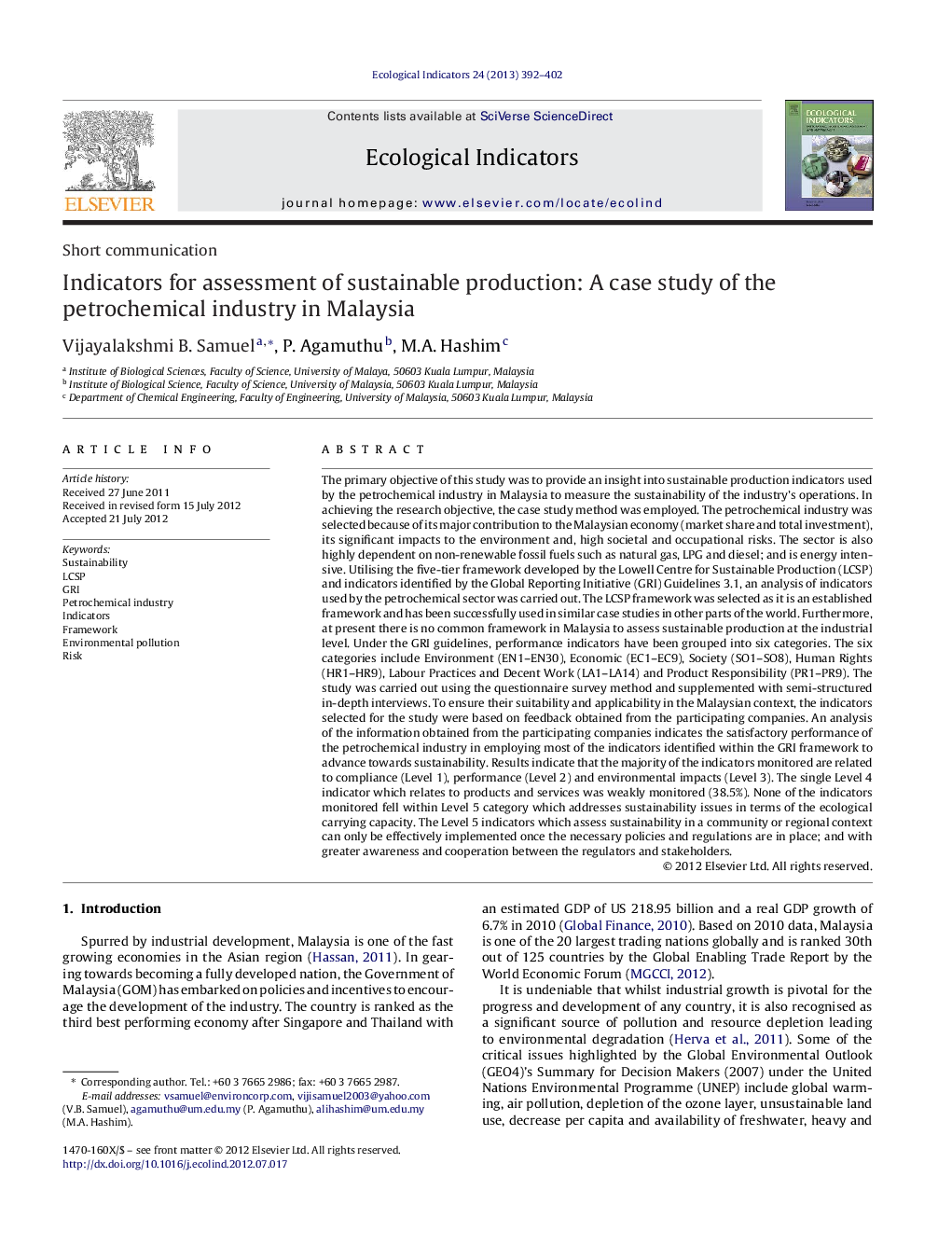| Article ID | Journal | Published Year | Pages | File Type |
|---|---|---|---|---|
| 4373659 | Ecological Indicators | 2013 | 11 Pages |
Abstract
The primary objective of this study was to provide an insight into sustainable production indicators used by the petrochemical industry in Malaysia to measure the sustainability of the industry's operations. In achieving the research objective, the case study method was employed. The petrochemical industry was selected because of its major contribution to the Malaysian economy (market share and total investment), its significant impacts to the environment and, high societal and occupational risks. The sector is also highly dependent on non-renewable fossil fuels such as natural gas, LPG and diesel; and is energy intensive. Utilising the five-tier framework developed by the Lowell Centre for Sustainable Production (LCSP) and indicators identified by the Global Reporting Initiative (GRI) Guidelines 3.1, an analysis of indicators used by the petrochemical sector was carried out. The LCSP framework was selected as it is an established framework and has been successfully used in similar case studies in other parts of the world. Furthermore, at present there is no common framework in Malaysia to assess sustainable production at the industrial level. Under the GRI guidelines, performance indicators have been grouped into six categories. The six categories include Environment (EN1-EN30), Economic (EC1-EC9), Society (SO1-SO8), Human Rights (HR1-HR9), Labour Practices and Decent Work (LA1-LA14) and Product Responsibility (PR1-PR9). The study was carried out using the questionnaire survey method and supplemented with semi-structured in-depth interviews. To ensure their suitability and applicability in the Malaysian context, the indicators selected for the study were based on feedback obtained from the participating companies. An analysis of the information obtained from the participating companies indicates the satisfactory performance of the petrochemical industry in employing most of the indicators identified within the GRI framework to advance towards sustainability. Results indicate that the majority of the indicators monitored are related to compliance (Level 1), performance (Level 2) and environmental impacts (Level 3). The single Level 4 indicator which relates to products and services was weakly monitored (38.5%). None of the indicators monitored fell within Level 5 category which addresses sustainability issues in terms of the ecological carrying capacity. The Level 5 indicators which assess sustainability in a community or regional context can only be effectively implemented once the necessary policies and regulations are in place; and with greater awareness and cooperation between the regulators and stakeholders.
Related Topics
Life Sciences
Agricultural and Biological Sciences
Ecology, Evolution, Behavior and Systematics
Authors
Vijayalakshmi B. Samuel, P. Agamuthu, M.A. Hashim,
